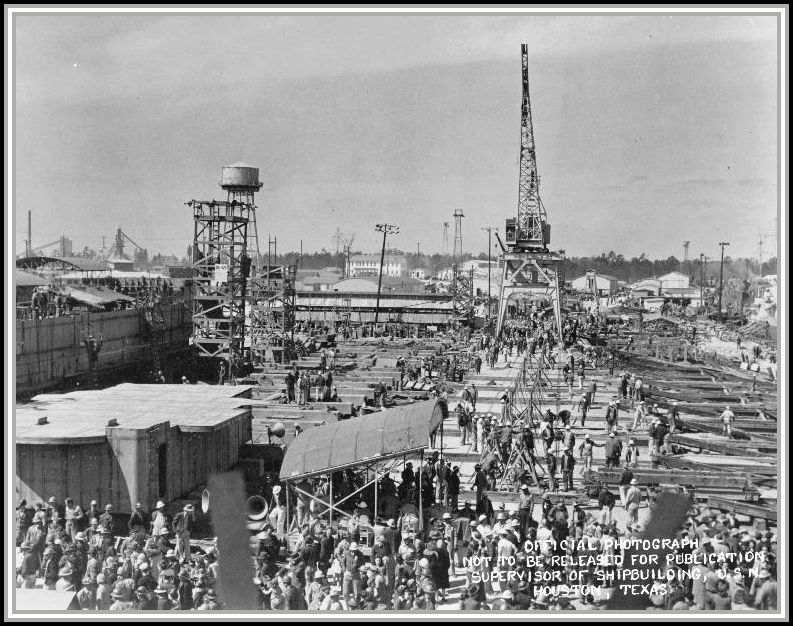Brown Shipyard
SECTION 2.
SECTION 2. CONTENTS
The Brown Shipbuilding Company was formed in Houston, Texas in 1941. The yard was formed as a subsidiary of the existing Brown and Root, an American engineering and construction company operating out of Houston. The Brown Shipbuilding Co. was initially formed as an emergency shipyard to begin construction for WWII naval vessels, particularly a type of U.S. Navy destroyer known as a submarine chaser.
Initially established on a Navy subsidy of $9 million, the Brown Shipyard was located at the junction of Houston's ship channel and Green's Bayou inlet. The founders, Herman and George Brown, had no experience in shipbuilding but were well versed in what it would require to manage a large scale industrial operation. Between May of 1943 and August 1944, the Brown Shipbuilding Co. produced 61 vessels, an average of one ship every week. Following the emphasis on destroyer escort ships, the yard switched focus to amphibious assault craft, of which they built nearly 250 amphibious assault craft known as "LM's" between 1944 and 1946. By the conclusion of WWII and the occupation of Japan and Germany, the Brown Shipbuilding Co. had produced almost 350 vessels, accumulating nearly $500 million in sales to the navy. Following the war, the yard was sold to Todd Houston Shipbuilding Company until Todd Houston closed its operation in 1985. The Yard reopened under Brown and Root in 1986 for barge and large vessel repair and remained an important piece of the Gulf's shipping industry until 2004 when the property was sold in pieces to a number of different buyers.
At the height of WWII, the Brown Shipbuilding Co. employed over 25,000 skilled workers. Production was so efficient under Brown management that they yard was recognized with a Presidential citation in 1944. The driving force behind all this production was the will of the workers who manned shipyards such as the Brown operation during WWII. These men and women poured their hearts and souls into the industrial war effort. They were an indispensable aspect of the war effort.
Between May 1943 and August 1944, Brown turned out 61 destroyer escorts, an average of one per week. Perhaps the most famous was the USS Samuel B. Roberts, part of the outgunned Taffy 3 unit that turned back a Japanese battleship force during the Battle of Leyte Gulf. Brown also built 254 amphibious assault ships, known as LSMs, between May 1944 and March 1946. By the end of the war, it had produced over 350 Navy warships in contracts totaling over $500 million.
After the war, the shipyard was sold to Todd Houston Shipbuilding Company. After Todd Houston closed in 1985, the yard was once again used by Brown and Root, this time for barge construction and repair. The property was sold piecemeal to multiple buyers in 2004.
Brown Shipbuilding Company in Houston, Texas - 1942
[Information and photograph on Brown Shipbuilding Company taken from records at the National Archives
College Park, MD.]
